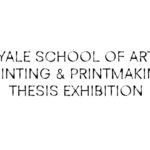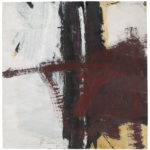
Courtesy of the Metropolitan Museum of Art
Due to a five million dollar gift from philanthropist Adrienne Arsht, the Metropolitan Museum of Art introduced a paid spring internship program for the first time this year. These interns — which include Yale students — are among the Met’s “Adrienne Arsht Interns.”
The Met’s Spring Intern class comprises 37 graduate and undergraduate students, 28 of them Arsht Interns. These students work in various departmental areas in the museum, including curation, editing and publishing, communications, conservation, development and library tasks. Even though the museum has paid summer interns in the past, this is the first time spring interns will receive a stipend.
“It is very fundamentally important that people pay their interns,” said Sid Carlson White ’22, an intern working in the Met’s American Wing. “If you’re not going to pay people, many working-class students — especially students of color — are not going to be able to take on these jobs and earn this type of valuable experience.”
Elizabeth Perkins, head of the Met’s internship programs, said this decision stems from recent efforts among museums to abolish the precedent that their internships are unpaid, citing paid opportunities at the Smithsonian and the Getty. This cultural shift was largely spurred by a 2019 statement from the Association of Art Museum Directors saying, “Art museums should pay interns, except in special circumstances justifying such an arrangement,” according to Perkins.
Perkins noted that the Met received nearly 1,000 internship applications this year, as compared to about 300 last year.
“That to me said right away that we had a whole group of students that we haven’t been able to reach because of that financial barrier with unpaid internships,” Perkins said.
White, an American studies and economics major who focuses on settler-colonial studies and economic history, is currently researching 19th-century American painter Winslow Homer for his internship.
White’s research is in preparation for an upcoming Met exhibition on Homer. His work will be used to inform brochures, pamphlets and texts for exhibition pieces.
In his research, White hopes to provide a more holistic depiction of Homer’s life and work by including his travels to the Caribbean and Canada. Specifically, White’s recent work has centered around the relationship between sharks and slavery. This theme relates to Homer’s best known work, “The Gulf Stream,” which depicts a stranded fisherman surrounded by tiger sharks. White said the painting references how the violence of the Caribbean slave trade drew sharks to harbors in unusually high numbers.
“I think it’s very interesting because even for a white audience at the turn of the century, the connection between sharks and Black bodies and slavery was something that was reasonably well understood,” White said.
Miguel Moya, a senior at Columbia University, is an Adrienne Arsht intern currently working in the Met’s education department. Moya noted that he enjoys his independence in his remote work.
Neither White nor Moya have a background in art or art history.
Perkins said that several other Met interns are not interested in pursuing careers in the arts or at museums. Perkins added that many Met staff members also did not start with museum work, but came from other fields. She said that the interns’ diversity of interests will provide them with a strong web of professional connections in the future.
“Part of the reason that we see such strength in a diverse cohort is that they get to really get to know people who are from a different part of the country, different backgrounds, different schools — diversity in the broadest possible sense,” Perkins said. “We emphasize to [our interns] that the people in their cohort hopefully will be their future colleagues and their future friends, and that we want them to build those connections with one another.”
Like White, Moya sees his internship as an opportunity to gain insights relevant to his professional path. Moya plans to volunteer with Teach For America and work in education- related fields upon graduating.
“I do see myself teaching art in my lesson plans,” Moya said. “I have an ethics professor at Columbia who always starts off a lecture by showing us a painting and kind of putting that painting in context with the lesson for the day.”
Moya said he feels art gives valuable insights into “human experience, society and the way that they interact.” Through his work experience in arts education at the Met, Moya hopes to learn how to convey these insights to his future students.
The Met is the largest museum in the United States.
Annie Radillo | annie.radillo@yale.edu
Correction, Mar. 15: A previous version of this story stated that there are 37 Arsht interns. In fact, there are 28. This story has been updated.










